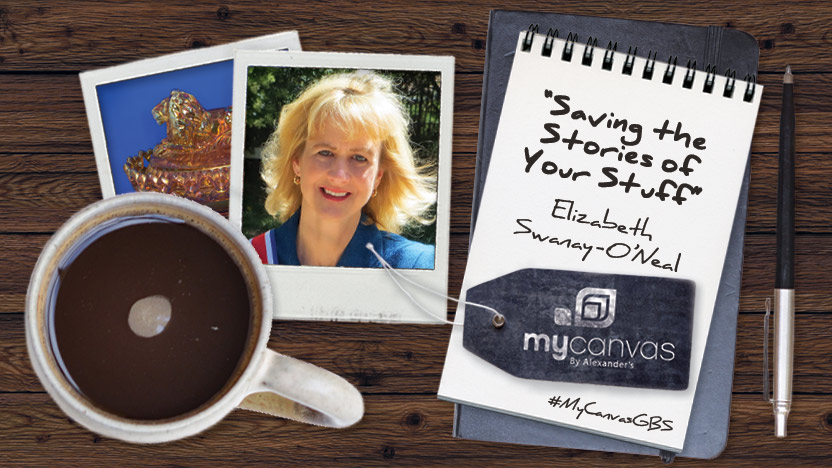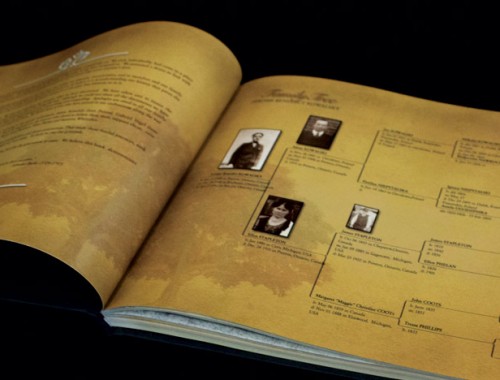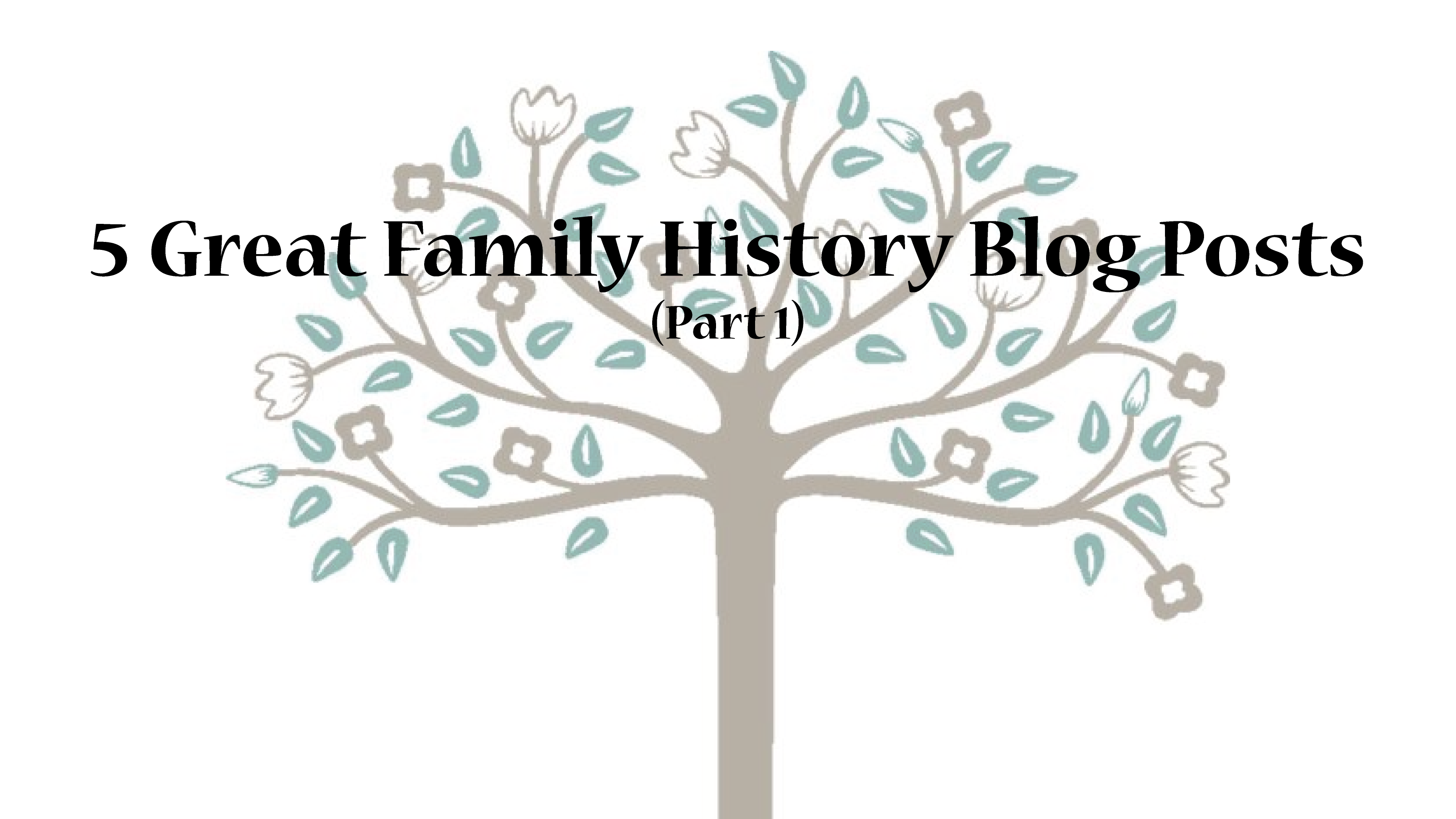“Mommy, where did you get that?”
Hmmm… where did I get that? Did it belong to my grandmother? Or was it my mother’s? Wait… if it was my mother’s, where did she get it? And how did I end up with it? With the everyday busy-ness of life, work, and family, I have found it increasingly difficult to remember my own name some days, much less where I got that antique candy dish.

Why do I care?
As the only child of a small family, I have, by default, become the caretaker of the family “stuff,” the one who swoops in to save those precious heirlooms and family photos. What’s more, I am the mother of another only child. So when I am gone, my daughter will be the one person left to remember and carry on our family traditions.
And that worries me.
Why? Because I don’t want my daughter to someday look at her great-grandfather’s candy dish, think it just another piece of mom’s “old junk,” and toss it in the trash.
We all know this can happen when our descendants do not understand the value of their precious family treasures. How many stories have you heard of heirlooms that “went missing?” Family Bibles, photographs, jewelry… where are they now? And why didn’t anyone take care of them?
Protecting Family Heirlooms
I am protecting my 19th and 20th century family heirlooms with 21st century technology. My process is fairly simple. To start, I photograph each item using the camera in my iPhone. I try to take shots from a variety of angles, including the bottom, especially if there is identifying information such as a maker’s mark.
For small item photography, I use a Shotbox, which is especially helpful for lighting and for keeping kid-clutter from showing up in the background. But you could just throw a blanket over a chair, grab a couple of lamps, and use that as your studio. I do, however, recommend that you use a tripod to keep your camera steady. And if your hands are shaky, like mine are, be sure to use your camera’s automatic timer or a remote shutter to avoid blurring your photos. You want your images to show as much detail as possible.
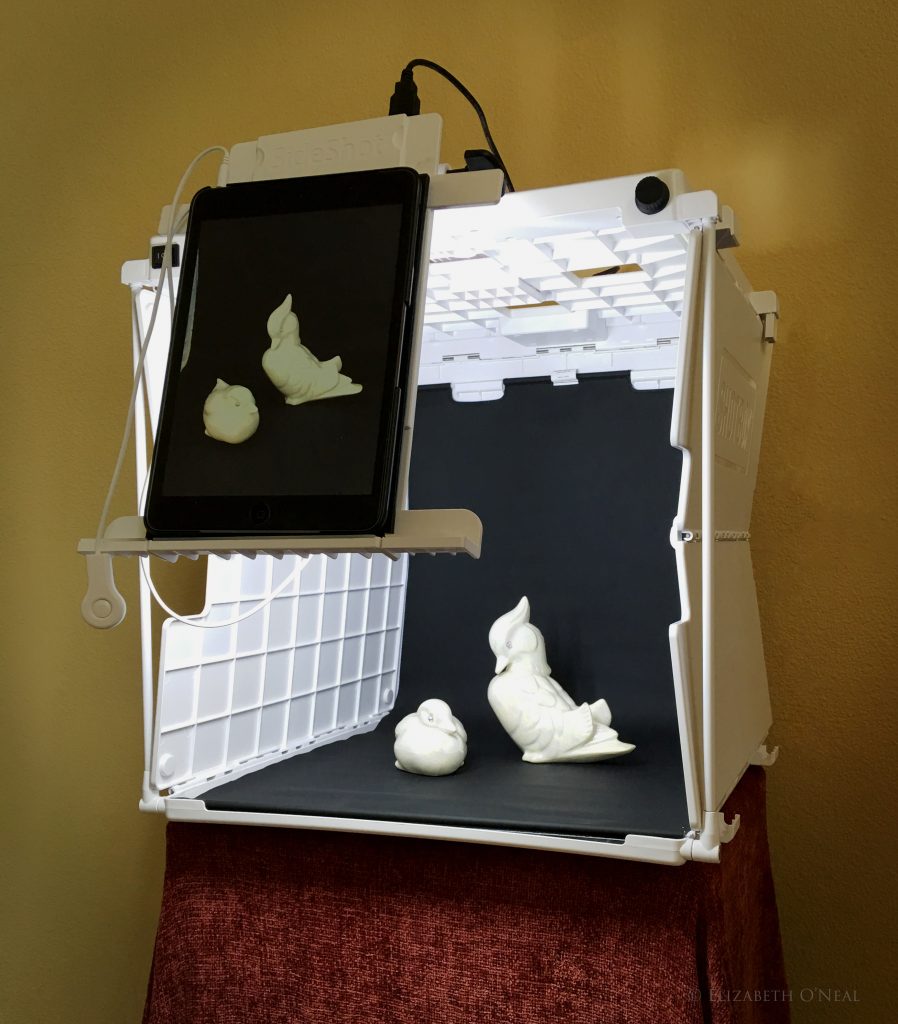
Save and Share Memories
After photographing my items, I upload them to a website called Thingealogy, which is sort of like a genealogy database for your stuff. Users can upload their photos via a mobile app, then write and/or record a story for each item. You can send your family members a special link to visit the site and share their own stories of your stuff. Who knows what they will remember that you did not?
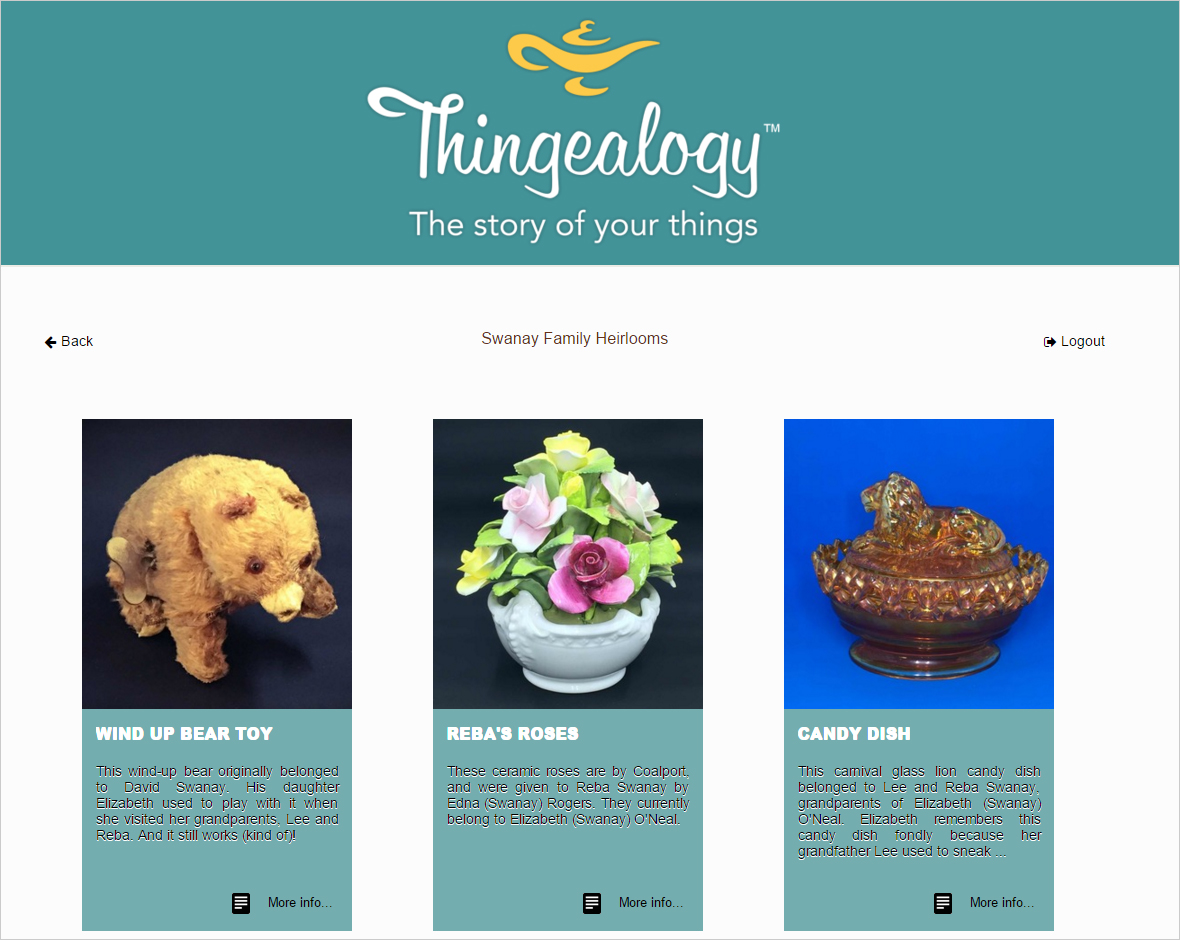
Additionally, each Thingealogy item is assigned its own QR code, which you can download, print, and attach to the item. Scanning an item’s QR code will take you to its Thingealogy web page, thus keeping the item and its story together.
This is not the only way to save the stories of your stuff, of course. You could upload your photos to any image-sharing website, such as Flickr, Google Photos, or even Instagram. You could upload them to Shutterfly or MyCanvas, and print out a book to share with family members. You could even store the photos on your home computer, and create a simple text document in which to record the memories of each item. If you do choose the latter option, I highly recommend that you save your text and images to a DVD, and store a copy in another location, just to be safe (Note: this is also helpful for insurance purposes).
Do keep in mind that technology changes, and websites go away. Be sure to pick a site that you trust to stick around, or a format that you can upgrade later, if necessary.
What is important is not so much how you choose to save the memories of your stuff.
What is important is that you be like Nike, and Just do it.
Like our forgotten ancestors, the possessions that were precious to them can also be lost and forgotten. Save the stories of your stuff: your descendants will thank you later.
_
About Elizabeth Swanay-O’Neal
Elizabeth Swanay-O’Neal is a genealogist and freelance writer who has been tracking her ancestors for nearly three decades. A former school teacher, Elizabeth was an avid promoter of technology in the classroom, and now teaches others how to use technology to enhance their research. She began writing the blog Little Bytes of Life in 2007 as a means of “communicating with humans over the age of 1,” though now her writing is focused on genealogy. She hopes that her only descendant will someday develop an interest in her ancestry. Keep in touch with Elizabeth via Facebook, Twitter, Google+, LinkedIn, Pinterest, and Periscope.
_
Upcoming Guest Bloggers
Last Week – Elizabeth Goesel – “Creating Your Family Museum”
Next Week – Miriam J. Robbins – “Creative Calendar Fun”
May 17, 2016 – Connie Yen – “Messages From the Past”

